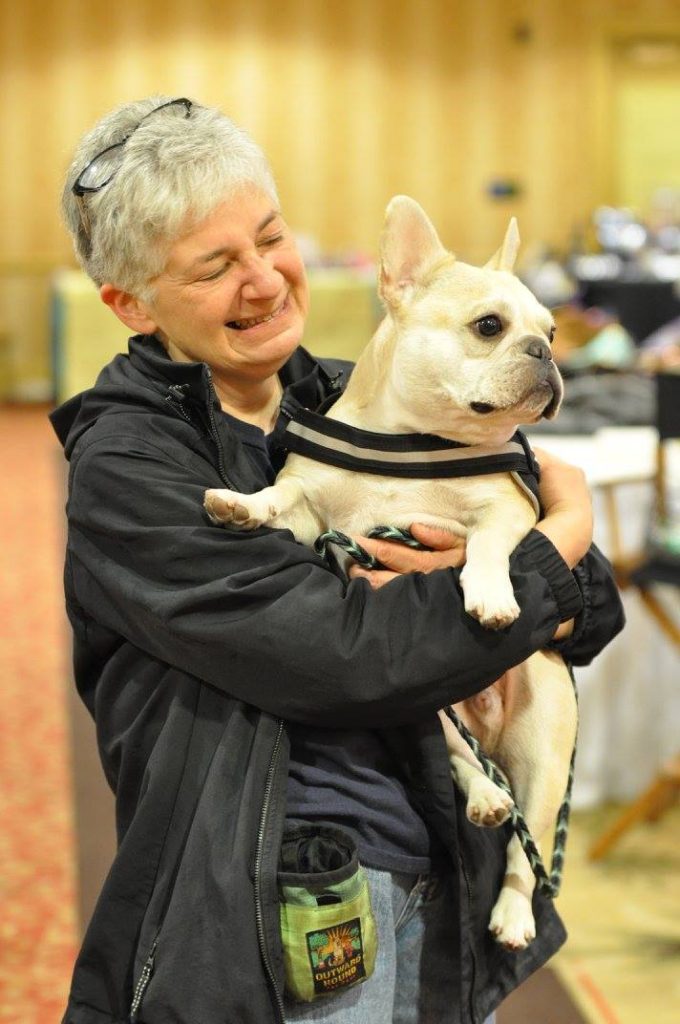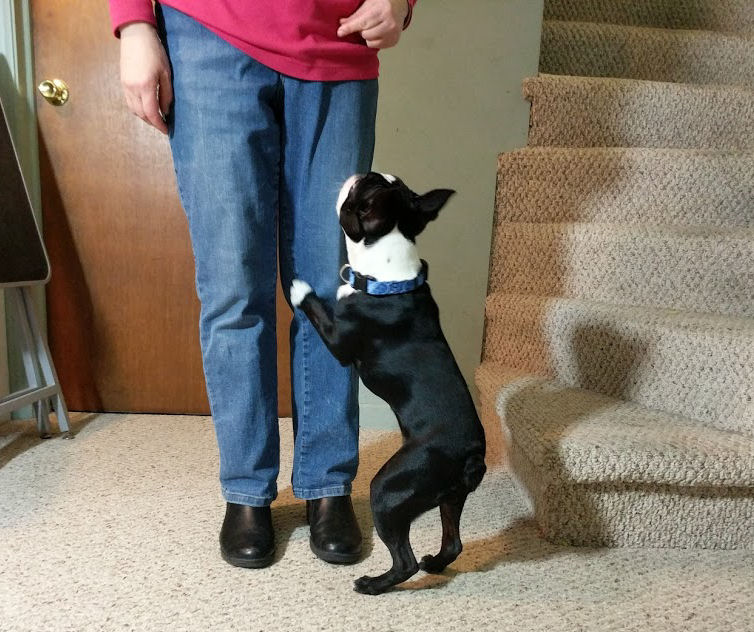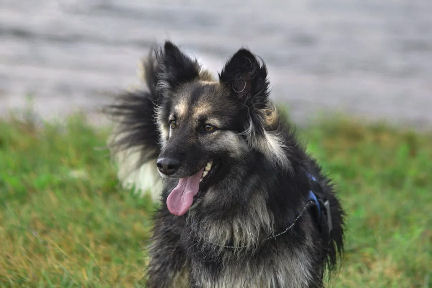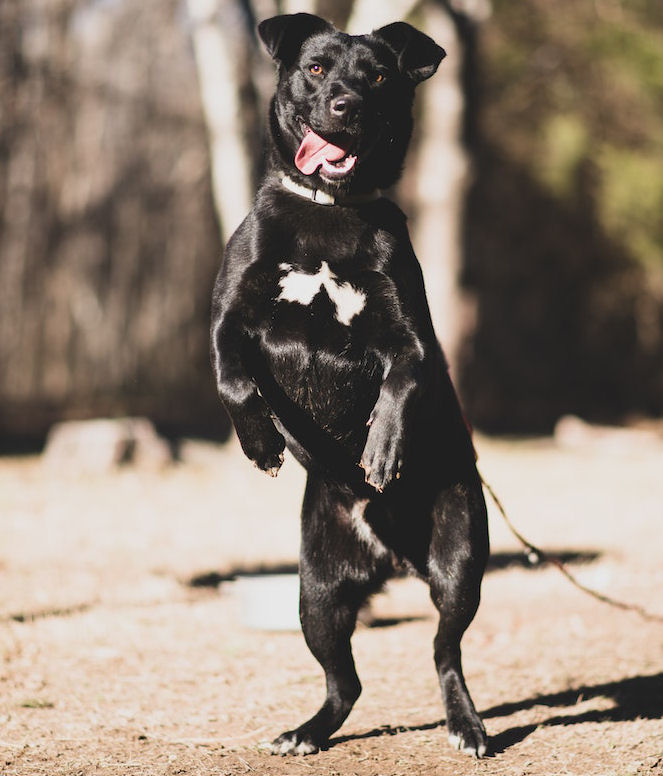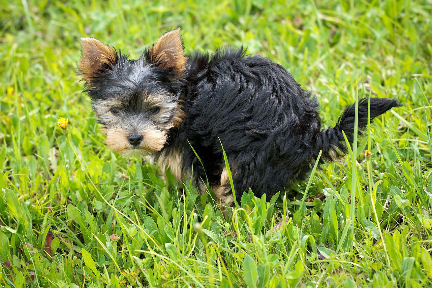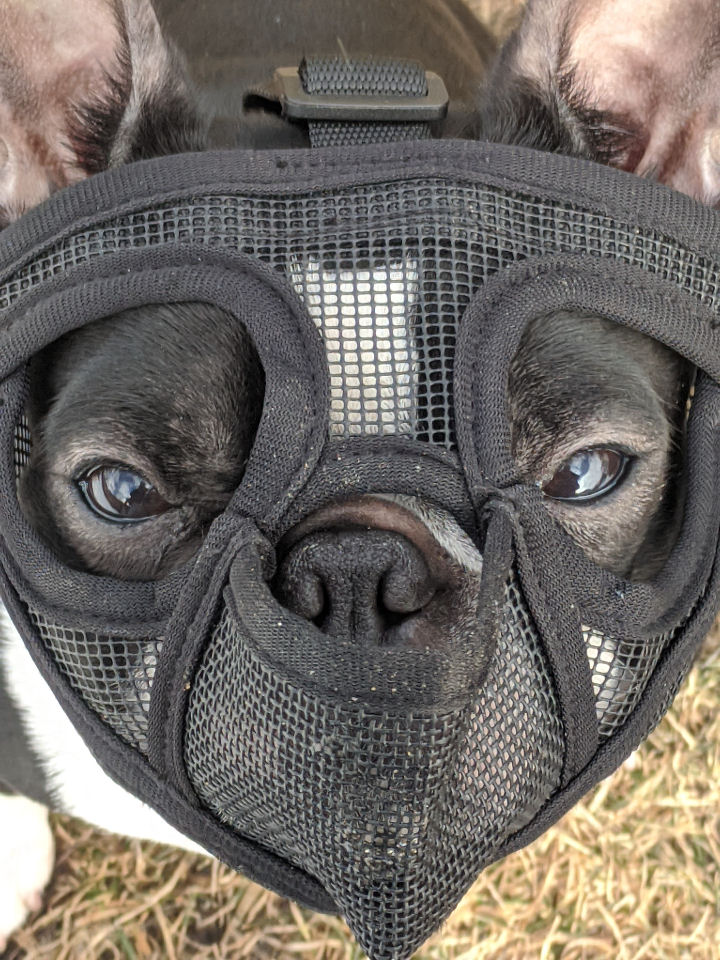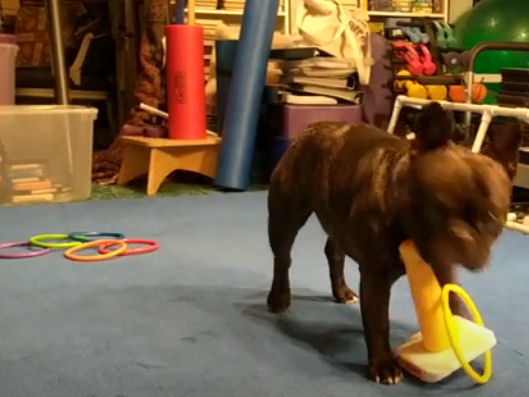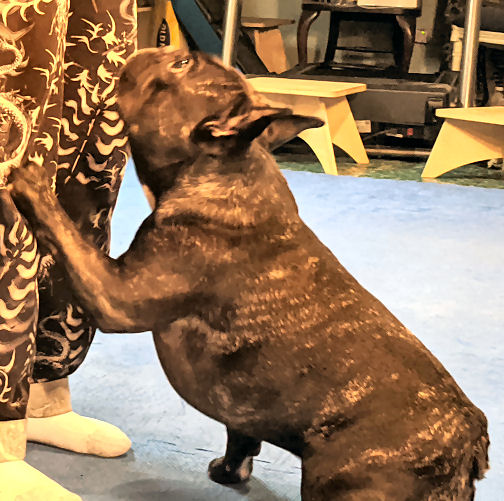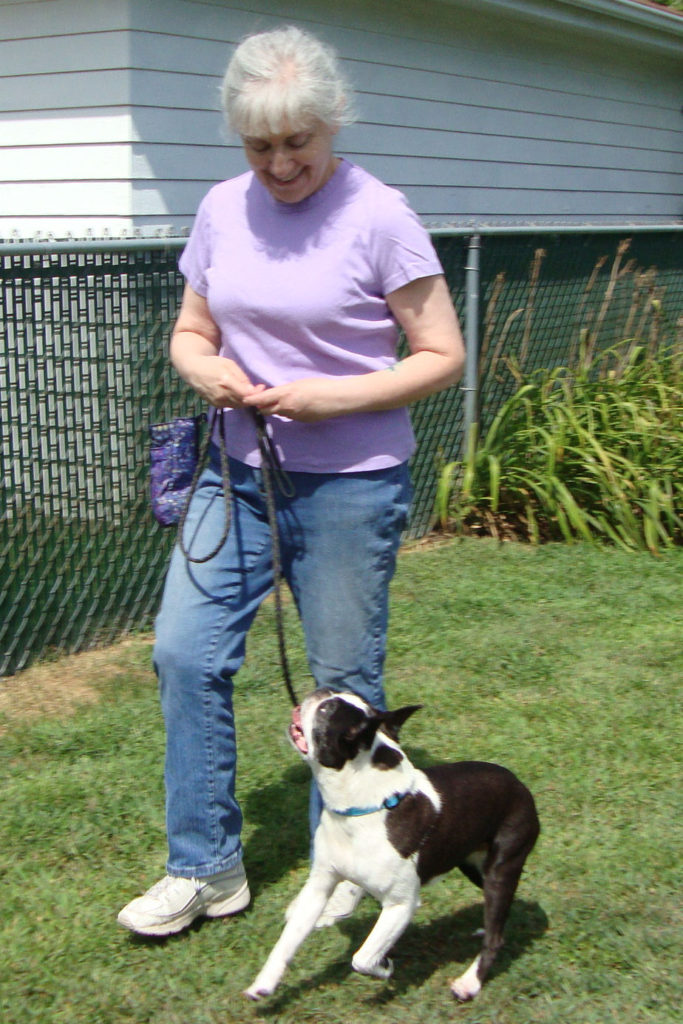Are you a good enough dog trainer to wait for your dog? Do you give them the time they need to process and take action?
Everybody wants their dog to get things right. Especially when they’re out in public. It’s understandable. We all want the world to know how wonderful our dogs are. And they are. If they’re allowed the time they need.
We’ve said before that the hardest part of dog training is doing nothing. Just waiting for your dog can be agonizing. Whether it’s remembering something they should do, or trying something new, dogs need time to think, process, and react.
Building patience
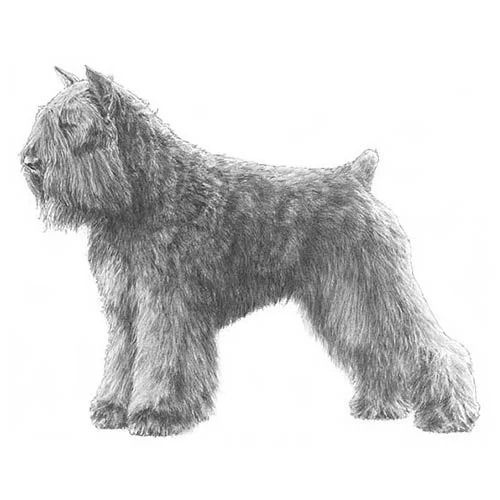
Just this week in Hope’s Obedience competition class, one of the dog/handler teams had a moment. Jessie, a gorgeous Bouvier des Flandres, and his dad were doing the Recall. (Handler leaves dog in a sit/stay, walks across the room, turns and faces dog, calls dog, dog runs and sits in front of handler.) David called Jessie, who bounded across the room (good boy!). And stood in front of David. Just stood. (Image from akc.org.)
Hope told David to wait. To look at Jessie’s butt. And wait. Don’t say anything, don’t do anything, don’t move. Just wait.
David and Jessie have been in class long enough that Jessie knows what he’s supposed to do. But Jessie’s young, and a bit silly and pushy. He tests what he can get away with. And, like every single person on the planet, David wanted to “help” his dog get it right. We could all see him itching to say “Sit!”
But he didn’t say it. And, after what seemed like half an hour to everybody, but was probably less than a minute, Jessie sat. David celebrated with his dog and everybody else cheered. We’re not sure if anyone else was holding their breath, waiting for Jessie, but we certainly were.
No matter how long you’ve been training dogs, no matter how well you know the dog, they’re still dogs. There can always be a surprise factor, a random distraction, a momentary brain glitch.
How do you know how long?
One of the questions people have is “How long should I wait?” The simple answer is “as long as your dog is still trying.” If your dog is still engaged, still happy to be playing the training game with you, keep waiting. But if your 2-Minute timer buzzes, keep waiting if you have some extra time. As long as your dog is paying attention, interested in the game, and not quitting on you – give them all the time they need. Wait for your dog.
Some of the very best training is achieved by letting the dog puzzle it through. We can all think of a situation where we figured out how to do something, instead of being told. And just by figuring it out ourselves, we knew it forever. Thinking through a problem cements the solution in your memory.
Did it work?
In competition class, everyone takes turns doing the Recall. We usually practice it two or three times. And it would be lovely if we could report that Jessie’s second turn this week had a triumphant, instantaneous “Sit!” That didn’t happen. Same thing – he ran over and stood in front of David. But this time, there was a difference in Jessie’s attitude. It was almost like he was asking David if he really meant it. David stood quiet and let Jessie think it through. Jessie sat.

